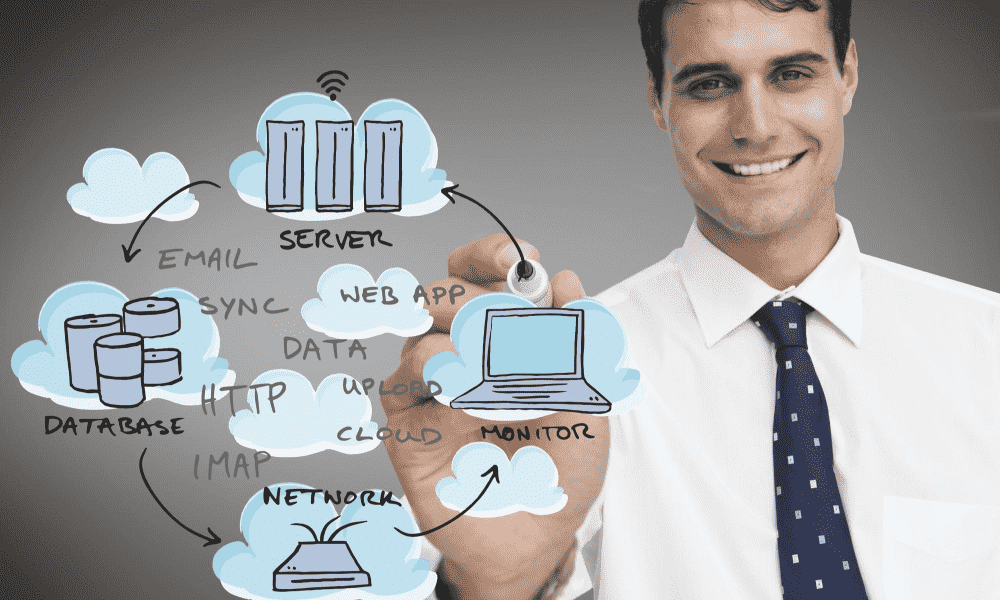Axis Consulting explores the integration between Salesforce, a comprehensive CRM platform, and Zendesk, a specialized support and service cloud platform. It highlights the seamless connection as a pathway to optimizing business processes and efficiency. Salesforce covers many business functions, and Zendesk focuses on support tasks.
Their integration ensures support-related data is accessible and sales or marketing insights are available. This article examines two main methods of integration: through the Zendesk Admin Center and via Skyvia’s code-free automated solution, detailing their features, benefits, and potential drawbacks to offer businesses a clear guide on enhancing their operational efficiency.
Table of Contents
ToggleUnderstanding Zendesk Salesforce Integration

What is Zendesk Salesforce Integration?
Zendesk Salesforce Integration connects Zendesk’s customer service platform with Salesforce’s CRM system, creating a seamless flow of information between the two. This integration allows businesses to offer more personalized customer service experiences by providing service agents with comprehensive customer insights directly within Zendesk, drawn from Salesforce’s detailed customer profiles.
The integration supports a variety of functionalities, including syncing customer data, managing sales activities from Zendesk, and automating service tasks based on Salesforce triggers. It bridges the gap between customer service and sales, ensuring that both departments have all the information they need to serve customers effectively and efficiently.
Why Businesses in Florida Should Consider Zendesk Salesforce Integration
For businesses operating in Florida’s diverse and competitive landscape, the integration offers several compelling advantages:
- Enhanced Customer Insights: Access to detailed customer data enables businesses to offer personalized service, a critical factor in customer retention and satisfaction.
- Improved Efficiency: Streamlining the flow of information between sales and customer service reduces response times and increases the productivity of both teams.
- Competitive Edge: Businesses can differentiate themselves in a crowded market by offering superior customer service.
Local success stories highlight the transformative impact of this integration. For instance, a Miami-based e-commerce company reported a 30% increase in customer satisfaction scores and a 35% increase in sales within six months of implementing Zendesk Salesforce integration.
Key Features of Zendesk Salesforce Integration

Integrating Zendesk and Salesforce brings many powerful features to enhance the customer experience and streamline business operations. Here’s a closer look at some key features that stand out for businesses leveraging this integration.
Enhanced Customer Profiles
By synchronizing customer data between Salesforce and Zendesk, businesses gain a 360-degree view of their customers. This integration enriches customer profiles with comprehensive data, including purchase history, interaction history, and personal preferences. Such detailed insights enable customer service agents to provide personalized support and tailored recommendations, significantly improving the customer experience.
Streamlined Customer Support Process
The integration facilitates a more efficient customer support process by allowing service agents to access Salesforce data directly within Zendesk. This means agents can view customer information, track sales activities, and update records in real-time without switching platforms. This seamless access speeds up response times and ensures that all customer interactions are informed and relevant, fostering a more cohesive customer journey.
Improved Sales and Support Collaboration
Zendesk Salesforce Integration fosters better collaboration between sales and support teams by providing a shared view of customer data. Sales teams can access support tickets and interaction histories to understand customer issues better, while support teams can see sales data, helping them identify upsell and cross-sell opportunities. This collaborative approach ensures that both teams are aligned in serving customers, increasing customer satisfaction and loyalty.
Setting Up Zendesk Salesforce Integration in Florida

Implementing Zendesk Salesforce Integration in your Florida business involves several key steps, from ensuring you meet the prerequisites to following best practices for a smooth transition. Here’s a detailed guide to help you navigate the setup process.
Prerequisites for Integration
Before diving into the integration process, it’s essential to ensure that your business meets the following prerequisites:
- Active Accounts: Ensure you have active accounts and administrative access to Zendesk and Salesforce.
- Compatible Versions: Verify that your Salesforce edition is compatible with the Zendesk integration. Generally, Salesforce Professional, Enterprise, Unlimited, Developer, and Performance editions are supported.
- Technical Expertise: Having a team member with a basic understanding of Salesforce and Zendesk APIs can facilitate a smoother integration process.
- Data Backup: Ensure you have a complete backup of your current Salesforce and Zendesk data to prevent any loss during the integration process.
Step-by-Step Guide to Integrating Zendesk with Salesforce
- Install the Zendesk for Salesforce App: First, install the app from the Salesforce AppExchange. Then, follow the installation prompts to integrate it with your Salesforce account.
- Configure Salesforce in Zendesk: Log into your Zendesk account, navigate to the Admin Center, and access the Salesforce integration settings. Here, you’ll connect your Salesforce account to Zendesk.
- Field Mapping: By mapping fields, define how data will synchronize between Zendesk and Salesforce. This step is crucial for ensuring customer information flows correctly between the two platforms.
- Set Up Trigger and Automation Rules: Customize triggers and automation rules in Zendesk to dictate how and when data should be updated in Salesforce. This could include creating tickets from Salesforce events or updating customer records based on ticket resolutions.
- Test the Integration: Before going live, thoroughly test the integration to ensure that data flows as expected and that no critical information is lost or incorrectly mapped.
Navigating Legal and Compliance Issues
Integrating Zendesk with Salesforce in Florida requires technical savvy and a keen understanding of legal and compliance issues related to data protection and privacy. Florida’s businesses must navigate a complex landscape of local and federal regulations to ensure their integration efforts are compliant. Here’s how to stay on the right side of the law.
Understanding Florida’s Data Protection Regulations
Florida has enacted laws that protect consumer data, including the Florida Information Protection Act (FIPA), which requires businesses to take reasonable measures to safeguard personal information and to notify individuals of data breaches on time. Additionally, businesses operating in certain sectors may need to comply with federal regulations such as HIPAA for healthcare information or GLBA for financial data.
Key points to consider:
- Data Privacy: Ensure that customer data collected and shared between Zendesk and Salesforce is done in a manner that respects privacy laws.
- Data Security: Implement robust security measures to protect customer data from unauthorized access or breaches.
- Breach Notification: Plan to notify customers and authorities in compliance with FIPA in case of a data breach.
Ensuring Compliance When Integrating Zendesk and Salesforce
- Review Data Flow: Map out exactly how data will flow between Zendesk and Salesforce and ensure this flow adheres to legal data protection and privacy requirements.
- Data Minimization: Only share necessary data between platforms. Avoid unnecessary data sharing that could increase liability or the risk of data breaches.
- Consent Management: Ensure that you have obtained appropriate consent from customers for their data to be shared and processed in this manner, especially for marketing purposes.
- Regular Audits: Conduct regular audits of your data processing and sharing practices to ensure compliance with all relevant laws and regulations.
- Employee Training: Train employees on the importance of data protection and the specific compliance requirements of your Zendesk Salesforce integration. This includes recognizing and responding to data breaches.
Maximizing the Benefits of Zendesk Salesforce Integration

Once you’ve successfully navigated the setup and compliance landscape of Zendesk Salesforce Integration in Florida, it’s time to focus on maximizing its benefits. This integration can transform your customer service and sales processes, but it requires strategic implementation and ongoing management to realize its full potential. Here are key strategies to ensure you get the most out of Zendesk Salesforce Integration.
Leveraging Integration for Enhanced Customer Insights
- Centralize Customer Data: Use the integration to create a centralized repository of customer data. This ensures that every interaction with a customer is informed by their history, preferences, and prior issues, allowing for a more personalized and effective service.
- Analyze Customer Interactions: Utilize data analytics tools available within Salesforce and Zendesk to analyze customer interactions. Look for patterns that inform product improvements, customer service enhancements, or targeted marketing strategies.
- Segment Customers: Use the rich data from both platforms to segment customers more effectively. This can help tailor communication and offers, improving customer satisfaction and conversion rates.
Automating Workflow for Efficiency
- Automate Routine Tasks: Identify tasks that can be automated using the integration, such as creating tickets from Salesforce leads or automatically updating customer records. This will free up your team to focus on more complex customer needs.
- Trigger-Based Actions: Set up Salesforce triggers that automatically update Zendesk tickets and vice versa. For example, closing a deal in Salesforce could trigger a satisfaction survey from Zendesk.
- Streamline Customer Support: Implement automated routing of customer support tickets based on customer value or issue complexity, ensuring that high-priority issues are addressed promptly.
Training Your Team for Optimal Use
- Comprehensive Training Programs: Develop training programs that cover both platforms and their integration. Ensure your team understands how to access customer data across both platforms and how to leverage integration features to enhance customer interactions.
- Regular Updates and Refreshers: Keep your team updated on any changes or new features introduced in Zendesk or Salesforce. Regular training refreshers can help maintain high proficiency levels.
- Encourage Feedback: Create channels for your team to provide feedback on the integration’s functionality and usability. This can help identify areas for improvement or additional training needs.
Troubleshooting Common Integration Challenges
Even with meticulous planning and execution, businesses may encounter challenges with their Zendesk Salesforce Integration. Identifying and resolving these issues promptly ensures that your integration remains a valuable asset rather than a source of frustration. Here are some common challenges and strategies for overcoming them.
Identifying and Resolving Integration Issues
- Data Synchronization Errors: Sometimes, data may not sync correctly between Zendesk and Salesforce, leading to outdated or incorrect customer information.
- Solution: Regularly check data sync reports for errors and inconsistencies. Built-in tools or third-party applications can automate error detection and correction.
- Workflow Disruptions: The integration may disrupt custom workflows in Zendesk or Salesforce, affecting operations.
- Solution: Map out all workflows before integration and test them in a controlled environment. Adjust workflows as necessary and provide training to your team on any changes.
- Performance Issues: The integration can sometimes slow down system performance, affecting user experience.
- Solution: Monitor system performance regularly. If slowdowns occur, consider optimizing your integration settings or consulting with Zendesk and Salesforce support for best practices on maintaining performance.
Zendesk Salesforce Integration Support Resources in Florida
For businesses in Florida, local support resources can be invaluable for troubleshooting and optimizing your integration. Consider the following:
- Local User Groups: Join Zendesk and Salesforce local user groups or online communities. These can be great sources of advice, tips, and best practices from peers who have faced similar challenges.
- Consultants and Specialists: Florida has numerous CRM consultants and specialists who can provide expert advice, hands-on assistance, and customized solutions for your integration challenges.
- Training and Workshops: Watch for training sessions, workshops, and webinars in Florida. These events can provide deeper insights into effectively managing and troubleshooting your integration.
Conclusion
The Zendesk Salesforce Integration offers Florida businesses a powerful tool to enhance customer relations and streamline operations. By understanding and maximizing its benefits, navigating legal and compliance issues, troubleshooting common challenges, and preparing for the future, businesses can stay competitive and set new standards for customer satisfaction.
As we look towards a future where customer experience is paramount, integrating these two platforms will play a crucial role in how businesses in Florida and beyond adapt to meet and exceed their customers’ expectations.